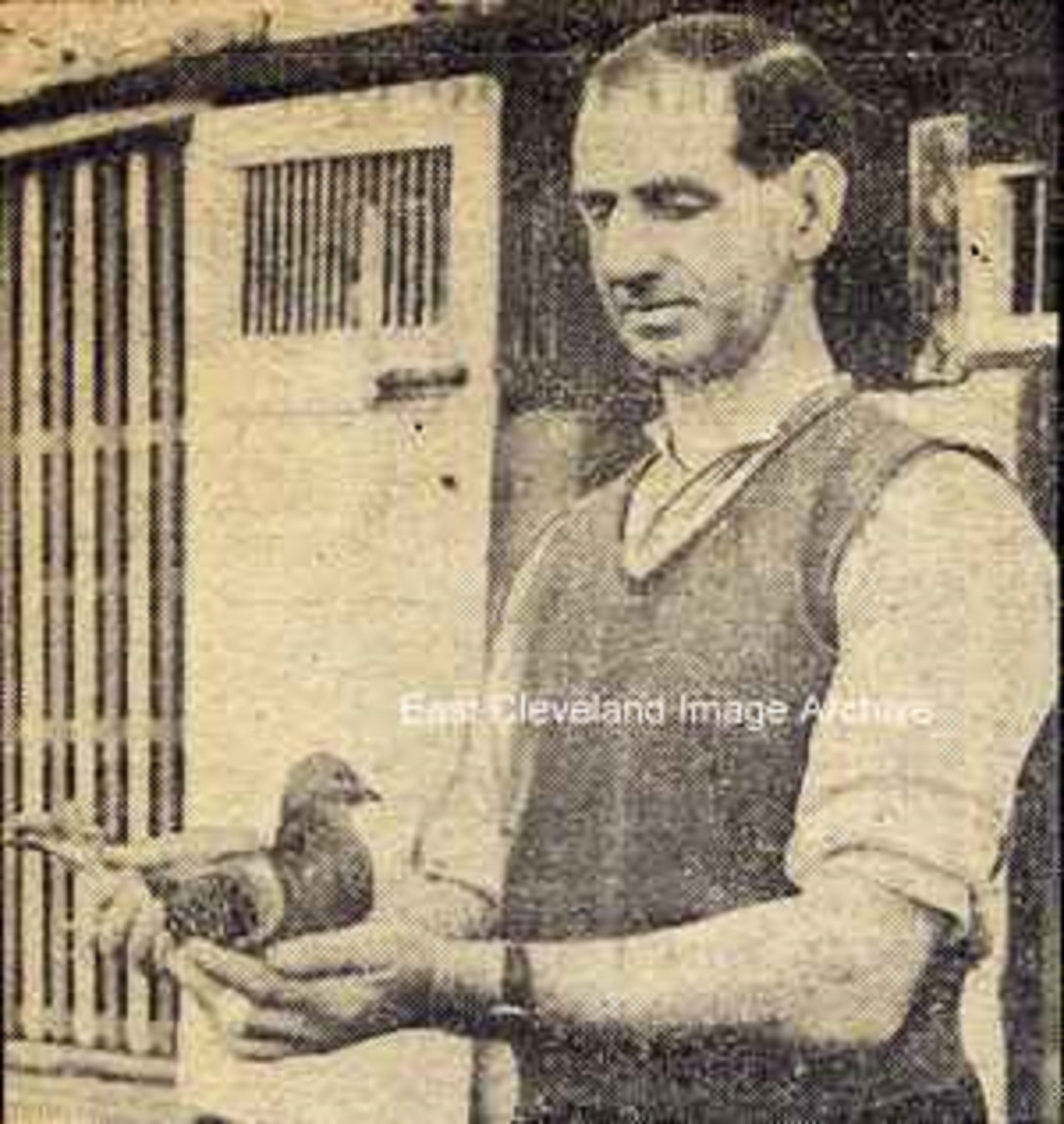
The late Jack Hume outside of his loft; probably the oldest loft in Cleveland and still in use, with – I suspect – his best bird.
Image and details courtesy of Stephen Steyert.
|
|
||
 The late Jack Hume outside of his loft; probably the oldest loft in Cleveland and still in use, with – I suspect – his best bird. Image and details courtesy of Stephen Steyert. 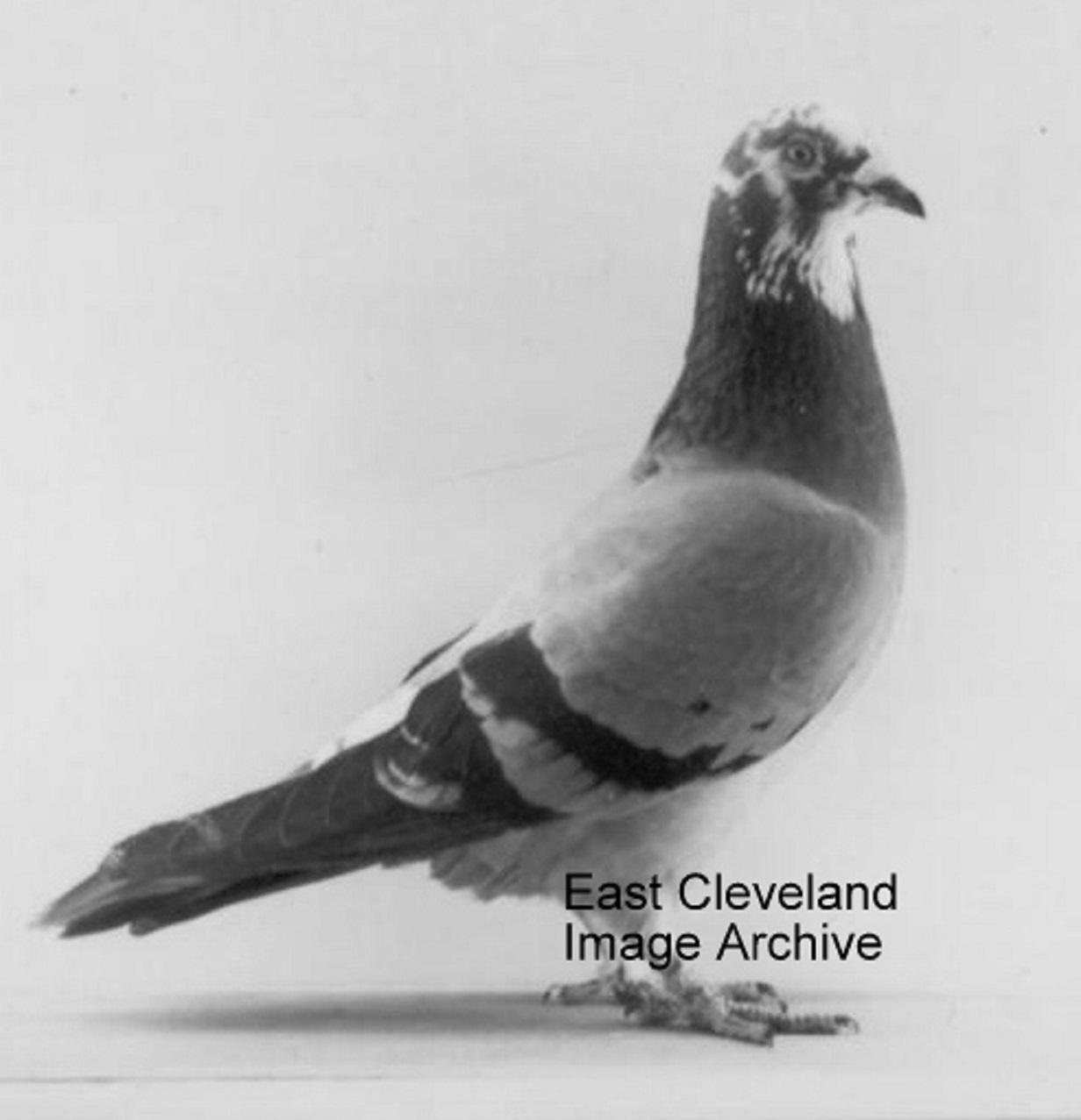 The late great John Hall’s bird – winner of the ”Up North Combine” – Cormeilles in 1960. Image and details courtesy of Stephen Steyert. 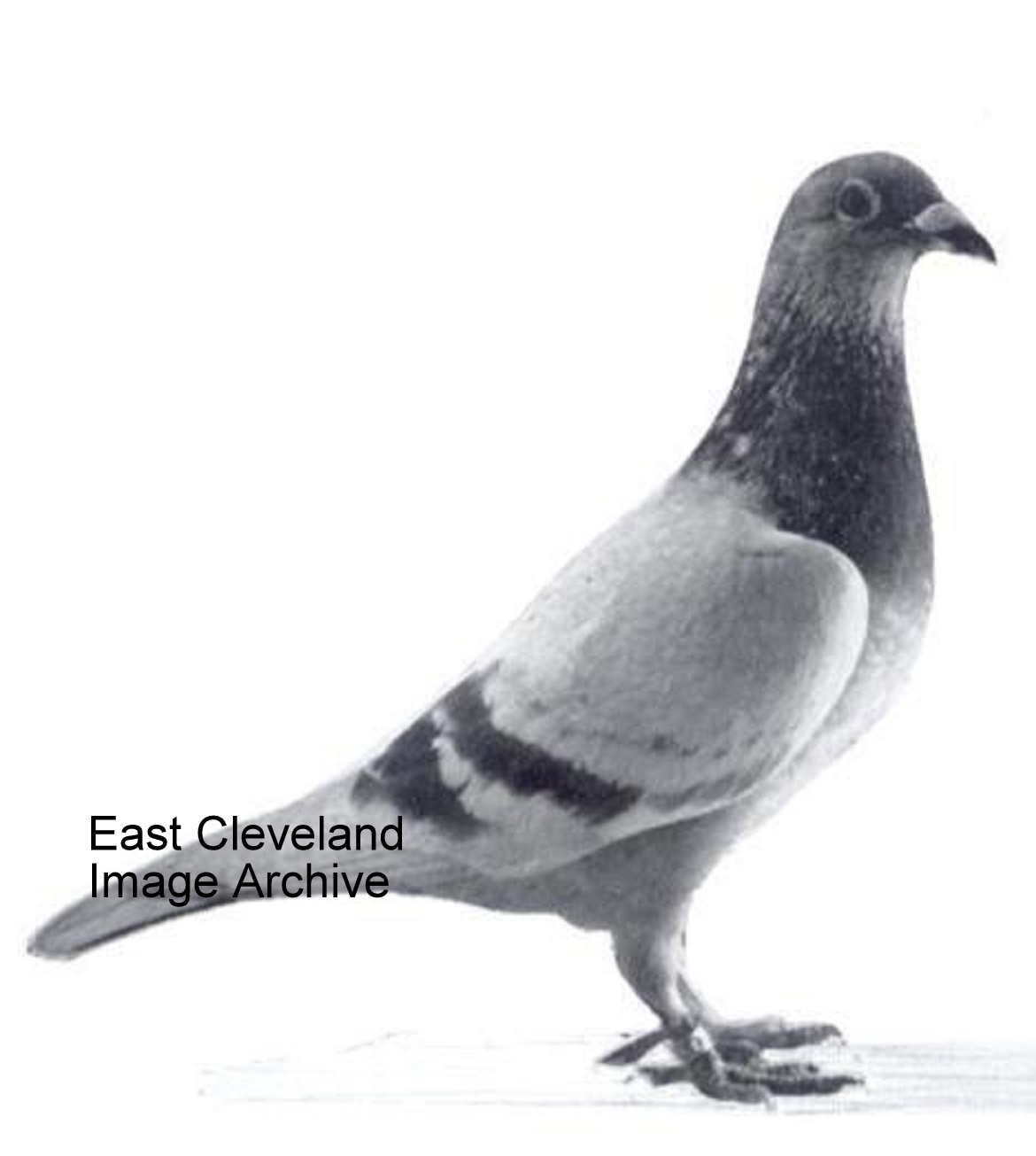 The late great John Hall’s bird – winner of the ”Up North Combine” – Lille in 1961. Image and details courtesy of Stephen Steyert. 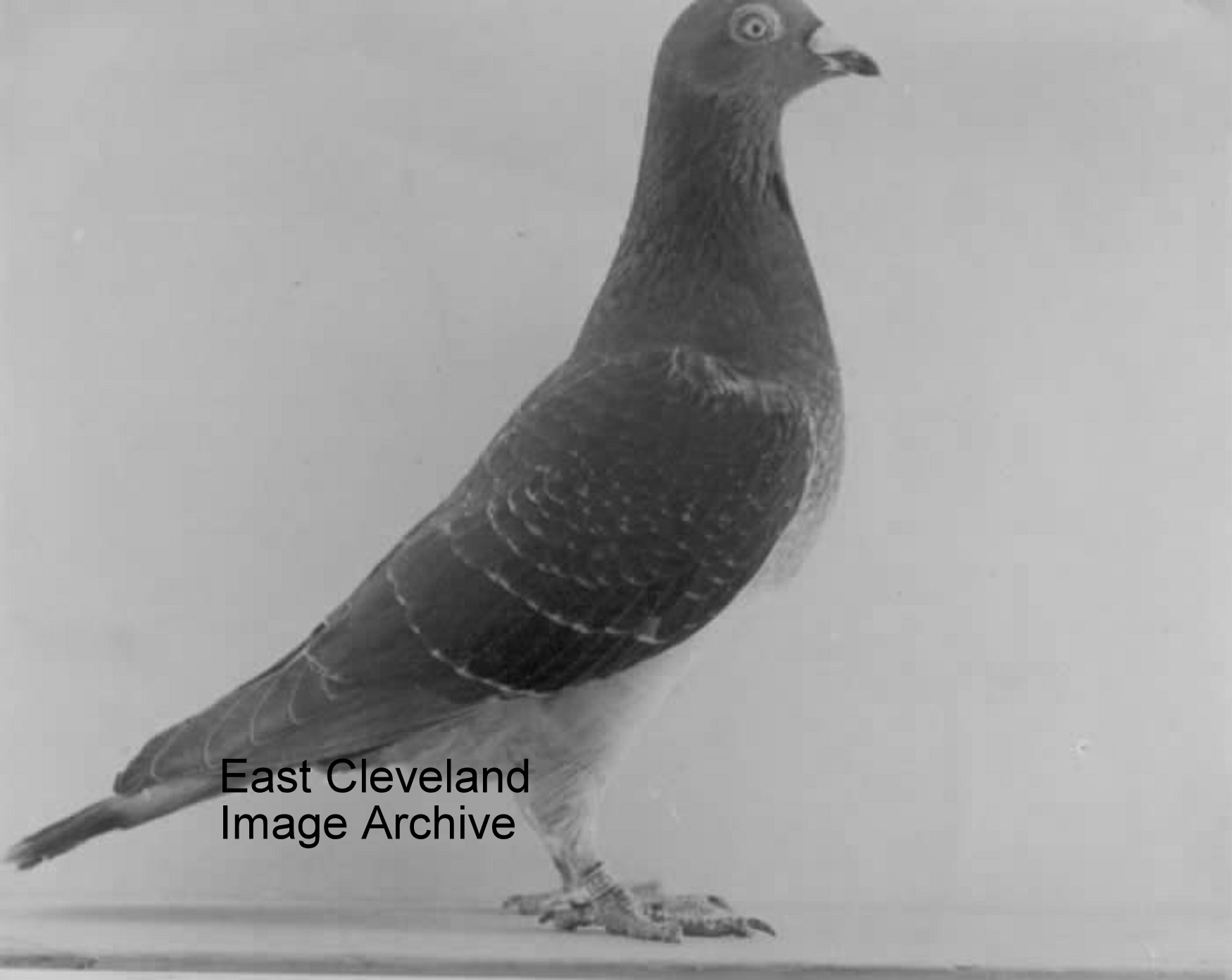 The late great John Hall’s bird – winner of the ”Up North Combine” -Luxembourg (1952). Image and details courtesy of Stephen Steyert. 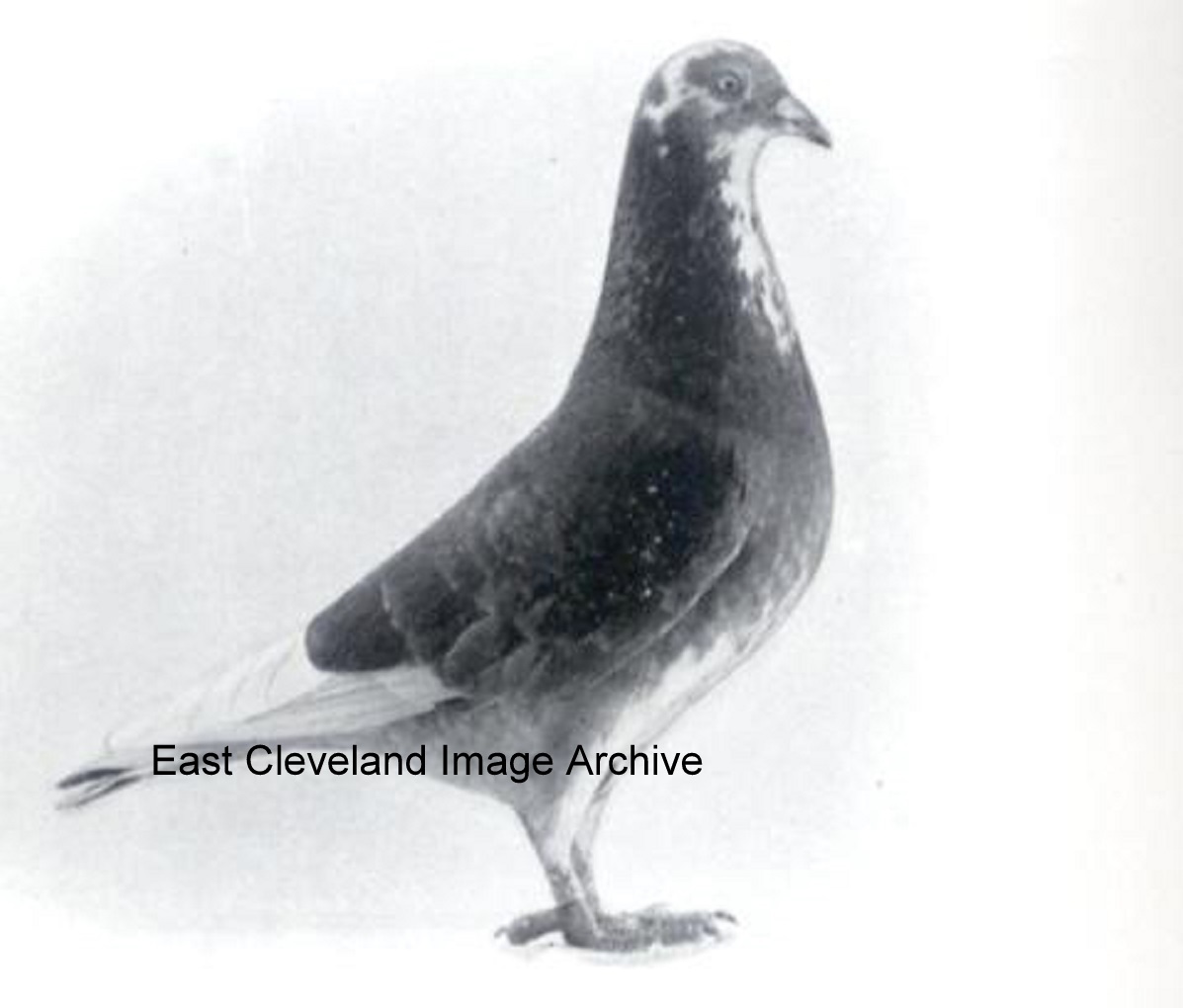 The late great John Hall’s bird – winner of the ”Up North Combine” -Welwyn Garden City (1953). Image and details courtesy of Stephen Steyert. 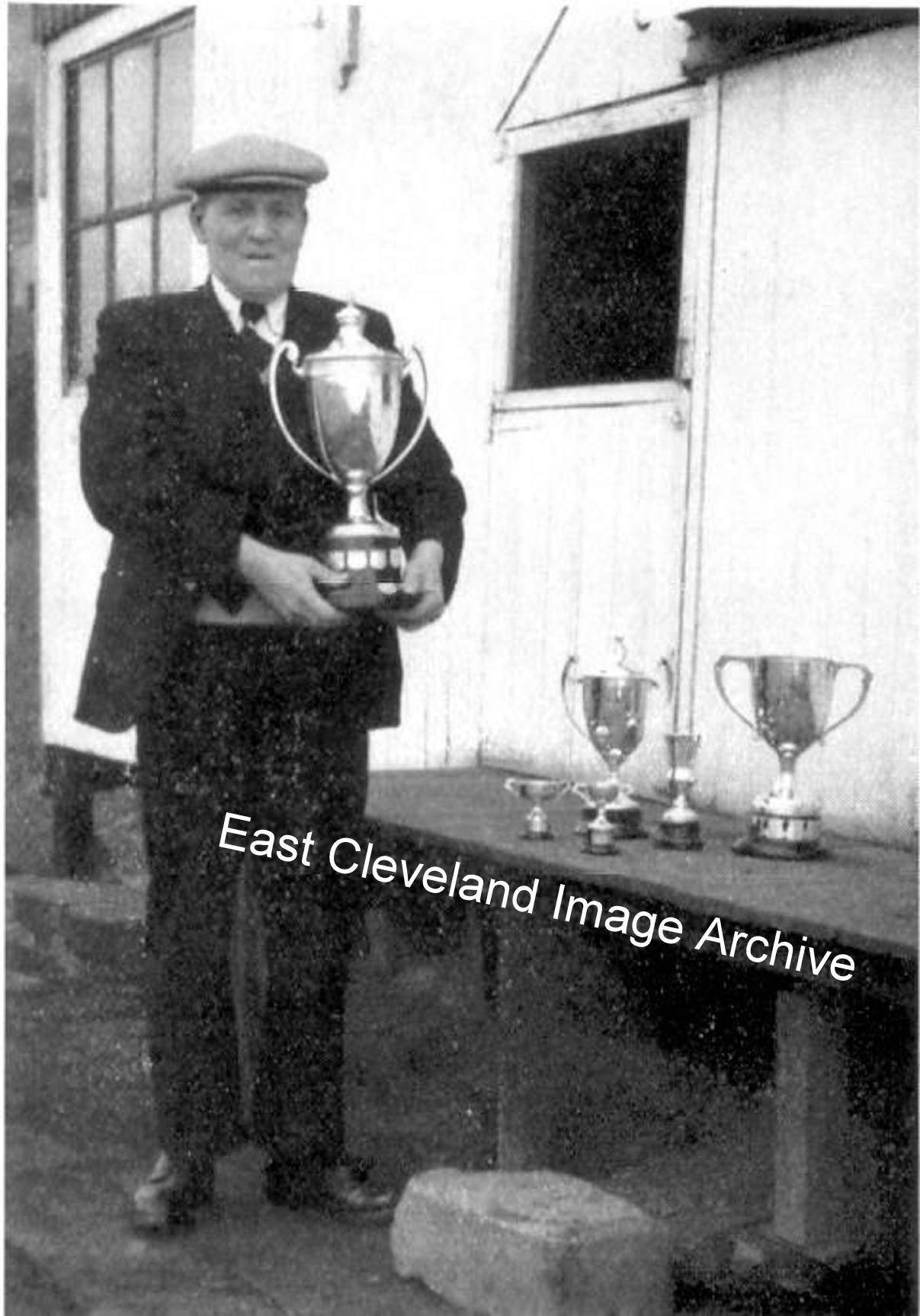 An image of the late great John Hall himself, with trophies, outside of his loft at Skinningrove. Stephen Steyert also advised: “The winning pigeon photograph is on the site along with his others winners.” Eric Johnson tells us: ”John Hall winner of the Up North Combine race from Luxembourg in July 1952, 6734 birds competing, covering 455 miles.” Image and information courtesy of Stephen Steyert, also thanks to Eric Johnson for the update. 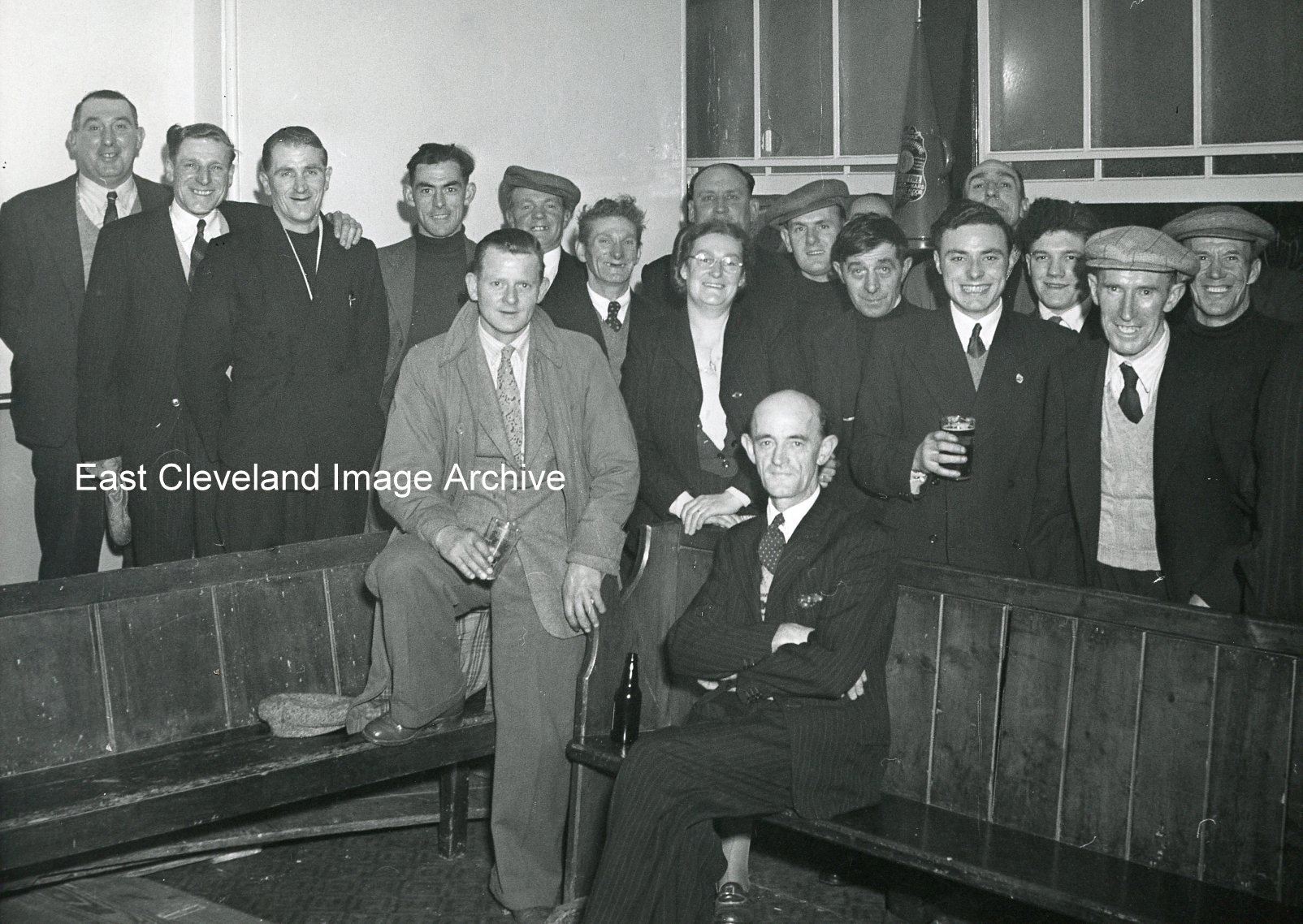 Staithes Pigeon Club members in the Wharton Arms at Skelton in 1951, for the dinner and presentation evening. Do you recognise anybody in the picture? Image and details to date courtesy of Mr. Ray Conn (photograph – Copyright L.W. & C.D. Richardson & Son, Redcar). 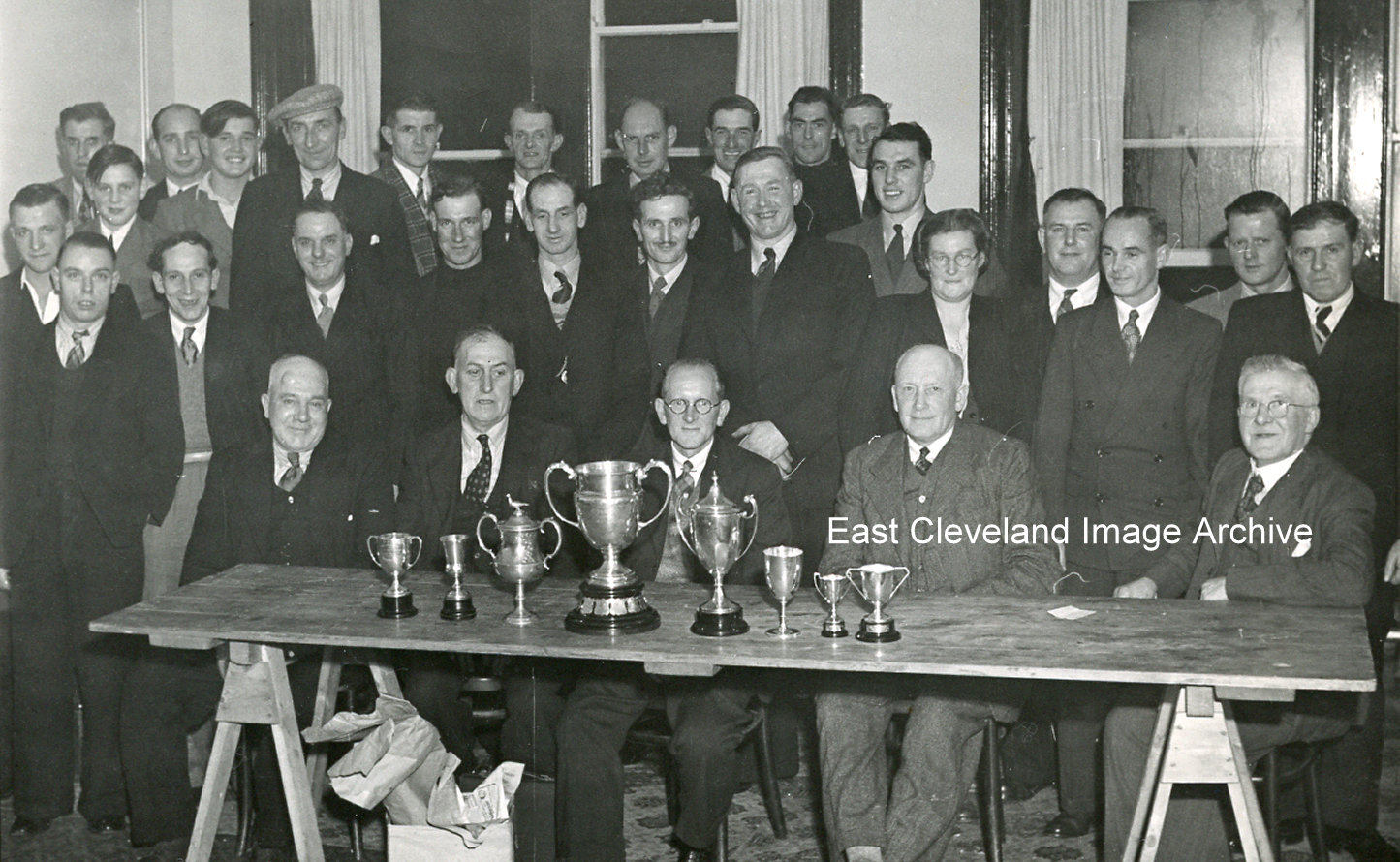 Pigeon club members photographed at a District presentation evening held in the Wharton Arms at Skelton in 1951. Can you recognise anybody present, please tell us? Paul Biott advises: “Third person in front row of the people standing on the right is my Grandad Charlie Biott.” Image and details courtesy of Mr. Ray Conn and the Pem Holliday Collection (photograph – Copyright L.W. & C.D. Richardson & Son, Redcar), thanks to Paul Biott for the update. 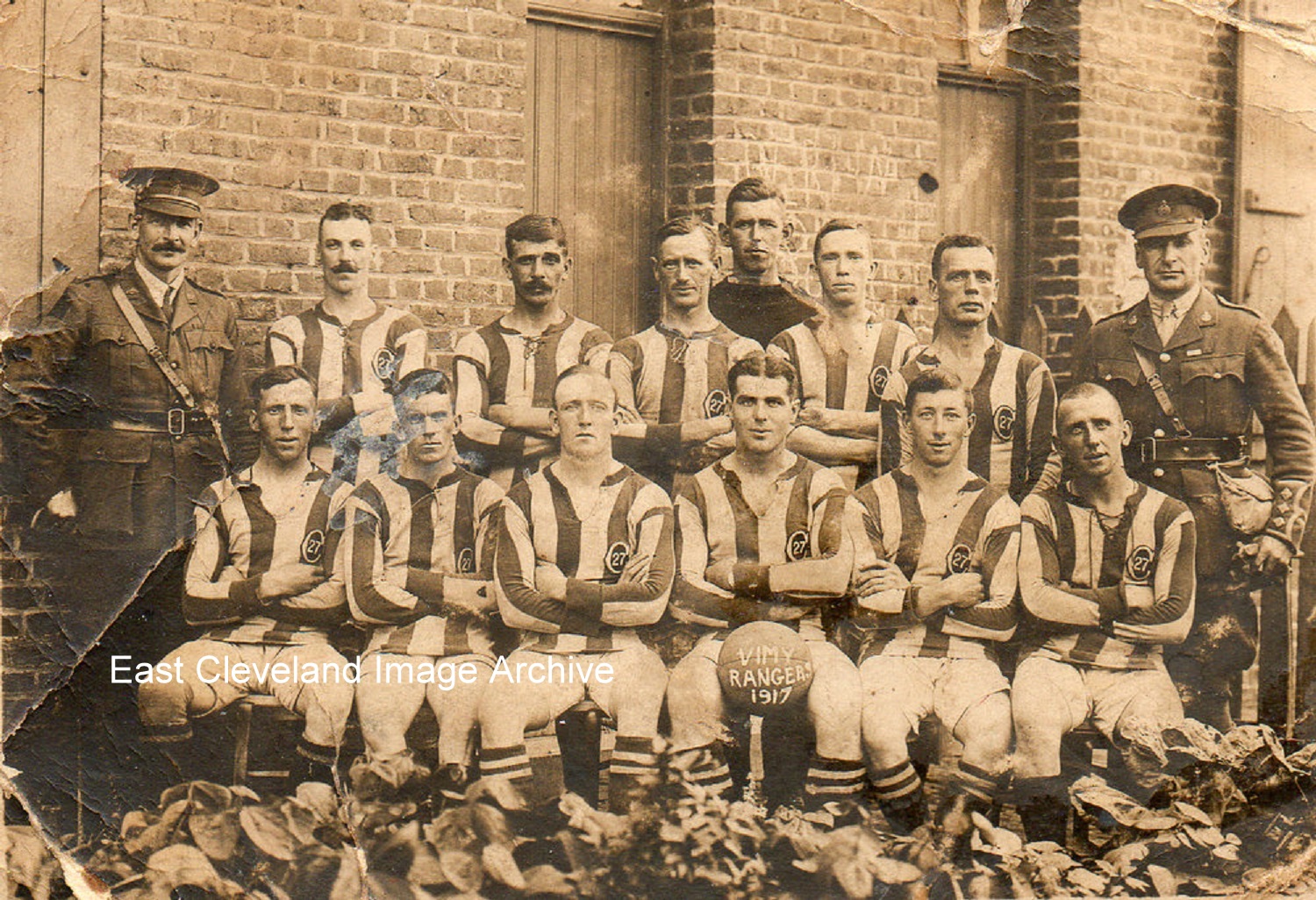 Okay the title is as much as the Archive knew about this photograph, who were they and where were they from? We awaited answers; pretty sure someone out there would be able to tell more about them. This is a very interesting photograph from the First World War. We need to identify the cap badges and the local lads. In 1917 the Allies launched an attack on the German lines at Arras in April. Nearly all offensives in the First War began in the Spring. More lives were lost on average per day at Arras than on the Somme in July 1916. The high ground to the north of Arras was called and still is as far as I know the VIMY ridge. It was high ground and had been held by the Germans probably since they retired after the Battle of the Marne in 1914. It was taken by the Canadians at great loss of life in 1917 and some small advance made. In fact the whole thing was a mock attack, invented by General Haig in the safe Chateau behind the lines. He had the track where he rode his horse sanded for safety. It was intended to keep the Germans diverted while General Neville attacked the Chemins des Dames, the high ground between Reims and Soissons. This was a failure and resulted in so many French dead that the French Army mutinied. Haig went on to what had been his main objective in July/August an advance at Ypres, which resulted in the horrors of Passchendaele”. Whilst Julie Riddiough added: ” There’s a Vimy barracks at Catterick Garrison if that helps at all?”. Peter Appleton has assisted with: “All I can extract, with certainty, from this image is that both officers are Captains. The 3 pips and 2 stripes on the cuff of the right-hand individual, and the 3 pips on the shoulders of the left-hand individual tell us that. The individual at the left has collar badges that are different in design to his cap badge which, unfortunately, is partly obscured by his cap strap. This wearing of two, different, badges indicates that he has a specialism, as depicted on his collar badge, but is attached to a different unit, as depicted by his cap badge. The individual at the right has collar badges that could be smaller versions of his cap badge. This cap badge is of the fairly common design: a laurel wreath, surmounted by a crown, with a central element, and without a scroll across the bottom. There are many such designs used by regiments during WW1. I cannot be sure, but one such design, which matches closely with what can be made out when enlarging the image, would be The Rifle Brigade”.
Image courtesy of Joan Jemson and thanks to Bill Danby, Julie Riddiough and Peter Appleton for the updates. 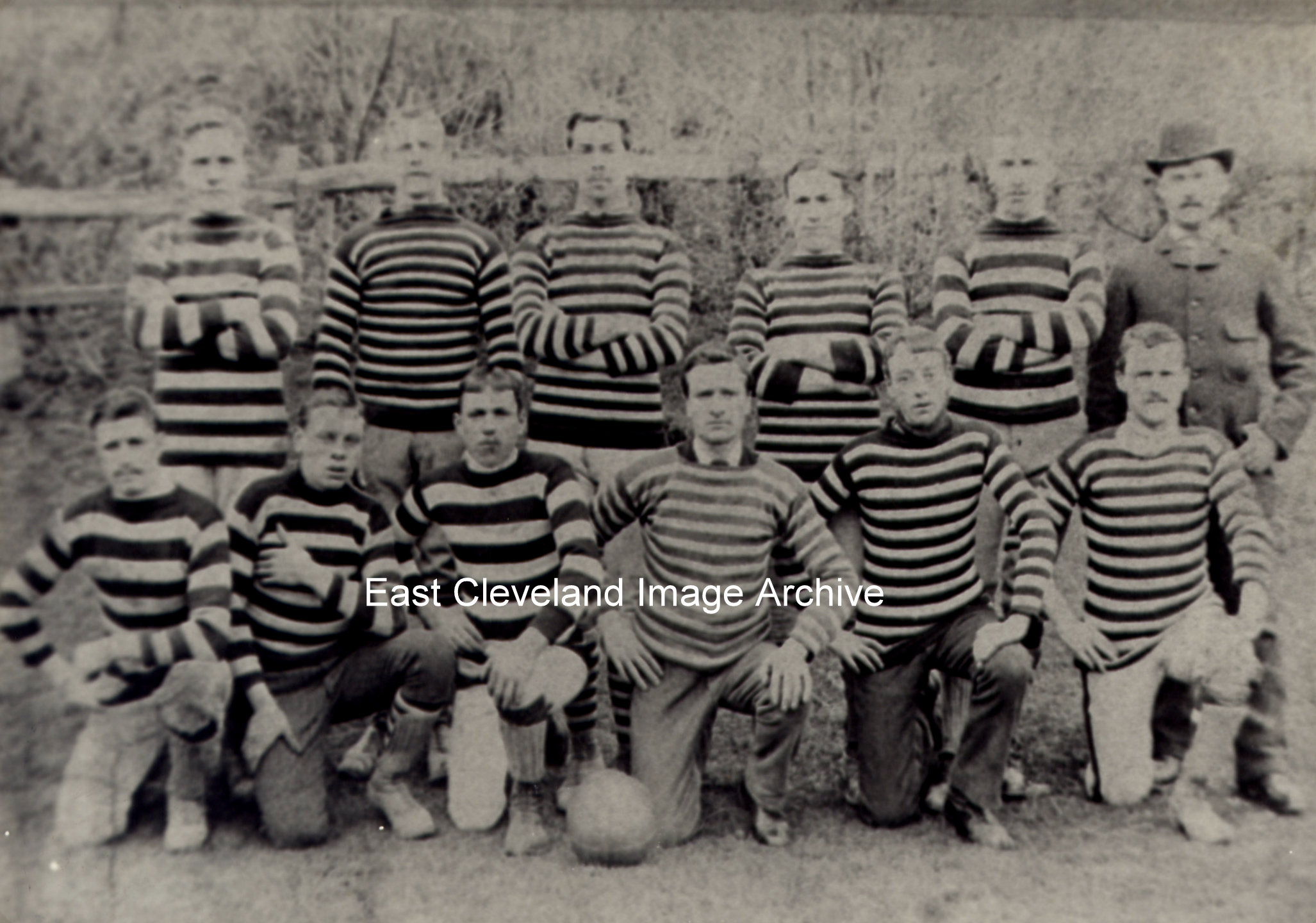 Well yes I do know they are not prisoners but it made you look to see didn’t it? Possibly a works team or Loftus Albion? Now you are here can you name anyone or tell where or when this photograph was taken? Image courtesy of the Pem Holliday Collection. |
||
Recent Comments